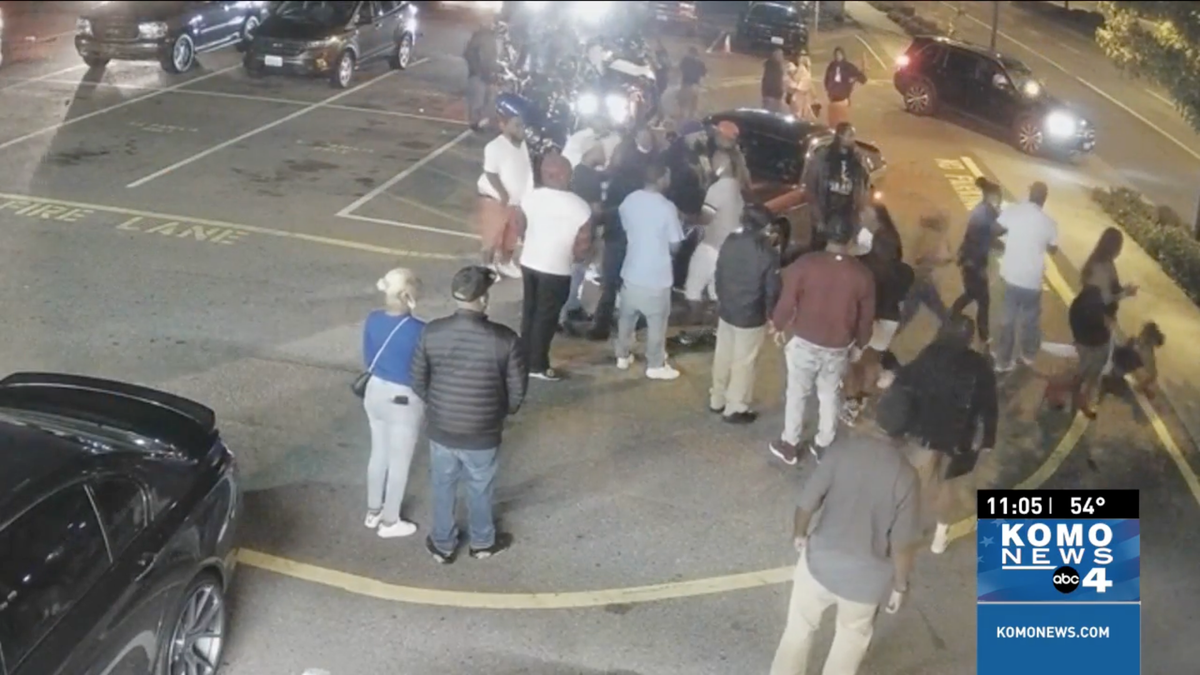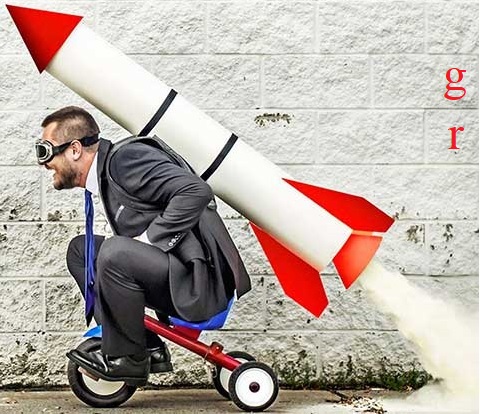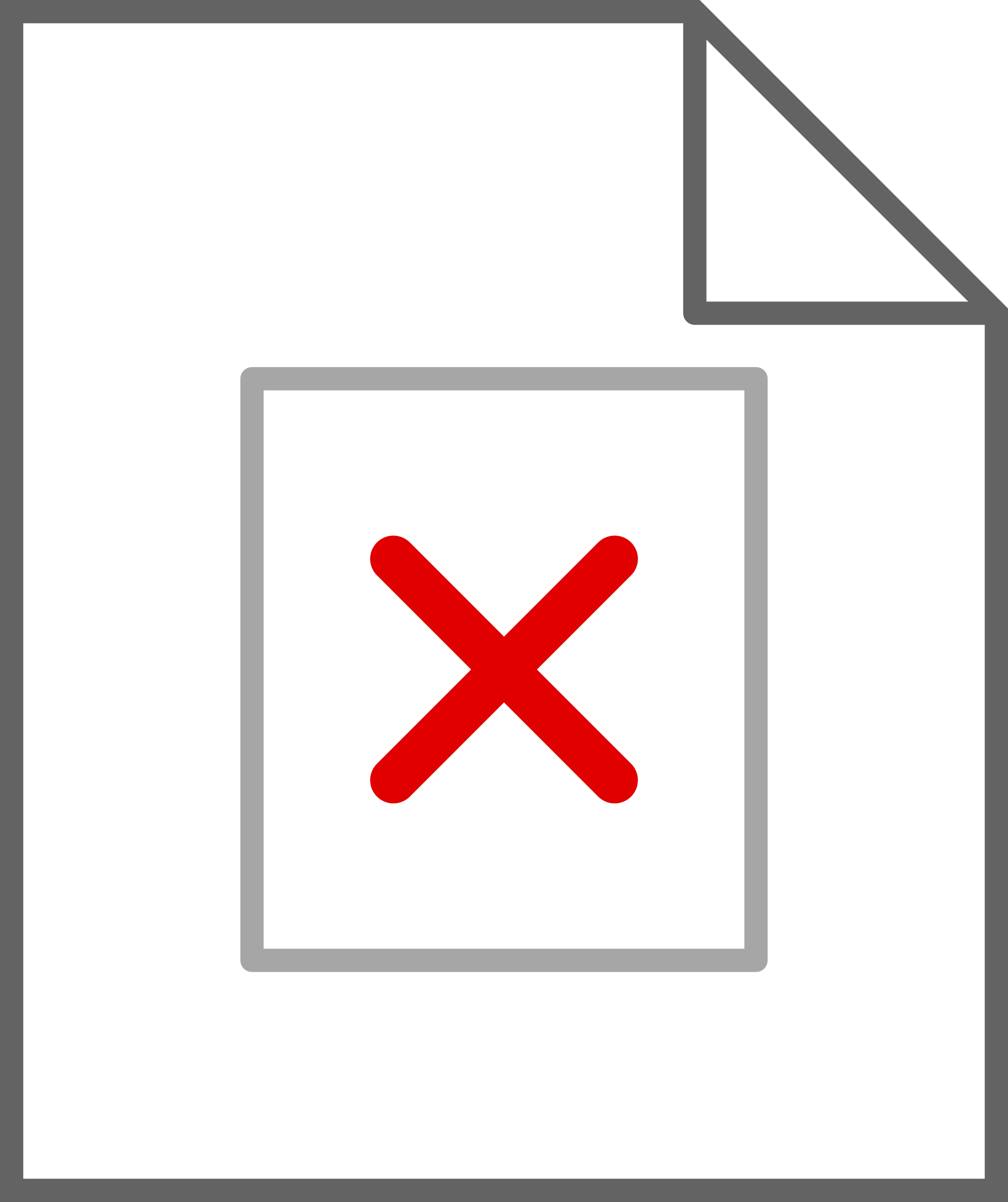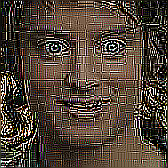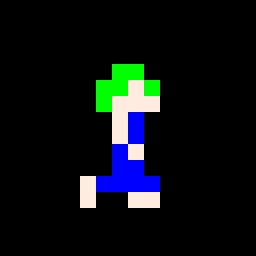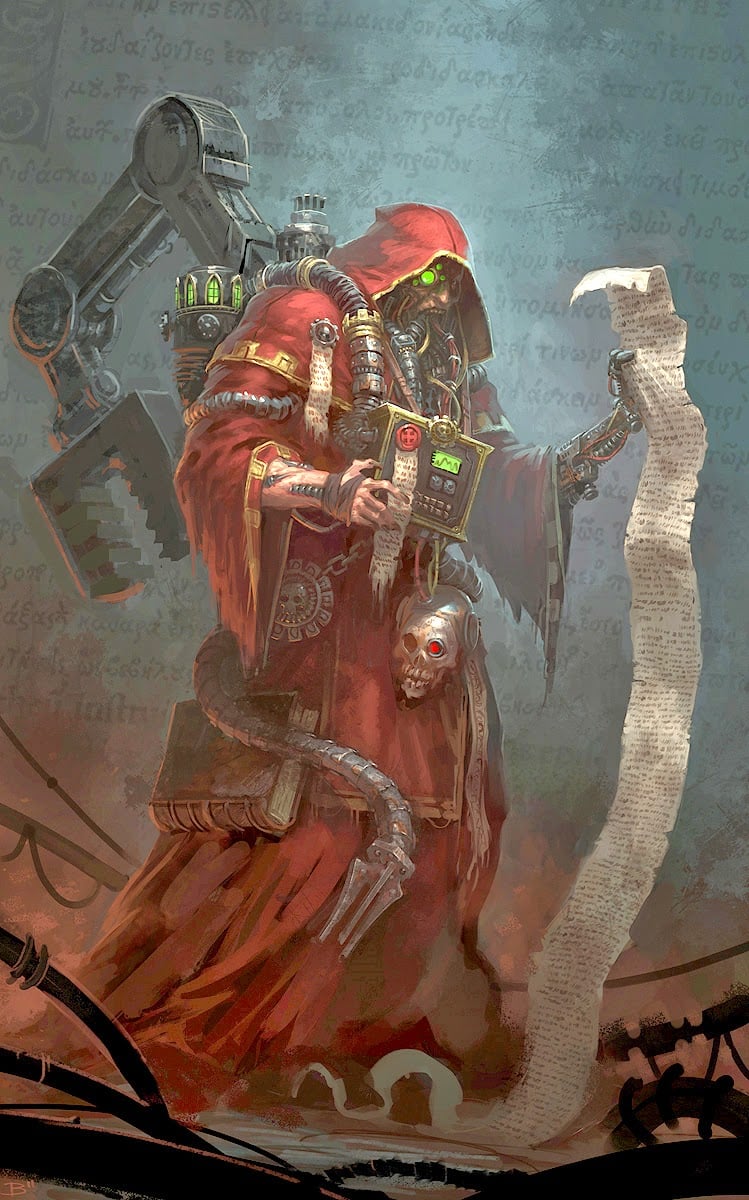A judge in Washington state has blocked video evidence that’s been “AI-enhanced” from being submitted in a triple murder trial. And that’s a good thing, given the fact that too many people seem to think applying an AI filter can give them access to secret visual data.
“Your honor, the evidence shows quite clearly that the defendent was holding a weapon with his third arm.”
If you ever encountered an AI hallucinating stuff that just does not exist at all, you know how bad the idea of AI enhanced evidence actually is.
No computer algorithm can accurately reconstruct data that was never there in the first place.
Ever.
This is an ironclad law, just like the speed of light and the acceleration of gravity. No new technology, no clever tricks, no buzzwords, no software will ever be able to do this.
Ever.
If the data was not there, anything created to fill it in is by its very nature not actually reality. This includes digital zoom, pixel interpolation, movement interpolation, and AI upscaling. It preemptively also includes any other future technology that aims to try the same thing, regardless of what it’s called.
One little correction, digital zoom is not something that belongs on that list. It’s essentially just cropping the image. That said, “enhanced” digital zoom I agree should be on that list.
Suddenly thinking of someone using moon photos from their phone as evidence.
Are you saying CSI lied to me?
Even CSI: Miami?
Horatio would NEVER 😎
Yeeeeeahhh he would. Sneaky one.
Hold up. Digital zoom is, in all the cases I’m currently aware of, just cropping the available data. That’s not reconstruction, it’s just losing data.
Otherwise, yep, I’m with you there.
See this follow up:
https://lemmy.world/comment/9061929
Digital zoom makes the image bigger but without adding any detail (because it can’t). People somehow still think this will allow you to see small details that were not captured in the original image.
Also since companies are adding AI to everything, sometimes when you think you’re just doing a digital zoom you’re actually getting AI upscaling.
There was a court case not long ago where the prosecution wasn’t allowed to pinch-to-zoom evidence photos on an iPad for the jury, because the zoom algorithm creates new information that wasn’t there.
There’s a specific type of digital zoom which captures multiple frames and takes advantage of motion between frames (plus inertial sensor movement data) to interpolate to get higher detail. This is rather limited because you need a lot of sharp successive frames just to get a solid 2-3x resolution with minimal extra noise.
Digital zoom is just cropping and enlarging. You’re not actually changing any of the data. There may be enhancement applied to the enlarged image afterwards but that’s a separate process.
But the fact remains that digital zoom cannot create details that were invisible in the first place due to the distance from the camera to the subject. Modern implementations of digital zoom always use some manner of interpolation algorithm, even if it’s just a simple linear blur from one pixel to the next.
The problem is not in how a digital zoom works, it’s on how people think it works but doesn’t. A lot of people (i.e. [l]users, ordinary non-technical people) still labor under the impression that digital zoom somehow makes the picture “closer” to the subject and can enlarge or reveal details that were not detectable in the original photo, which is a notion we need to excise from people’s heads.
I 100 % agree on your primary point. I still want to point out that a detail in a 4k picture that takes up a few pixels will likely be invisible to the naked eye unless you zoom. “Digital zoom” without interpolation is literally just that: Enlarging the picture so that you can see details that take up too few pixels for you to discern them clearly at normal scaling.
It preemptively also includes any other future technology that aims to try the same thing
No it doesn’t. For example you can, with compute power, for distortions introduced by camera lenses/sensors/etc and drastically increase image quality. For example this photo of pluto was taken from 7,800 miles away - click the link for a version of the image that hasn’t been resized/compressed by lemmy:

The unprocessed image would look nothing at all like that. There’s a lot more data in an image than you can see with the naked eye, and algorithms can extract/highlight the data. That’s obviously not what a generative ai algorithm does, those should never be used, but there are other algorithms which are appropriate.
The reality is every modern photo is heavily processed - look at this example by a wedding photographer, even with a professional camera and excellent lighting the raw image on the left (where all the camera processing features are disabled) looks like garbage compared to exactly the same photo with software processing:

No computer algorithm can accurately reconstruct data that was never there in the first place.
What you are showing is (presumably) a modified visualisation of existing data. That is: given a photo which known lighting and lens distortion, we can use math to display the data (lighting, lens distortion, and input registered by the camera) in a plethora of different ways. You can invert all the colours if you like. It’s still the same underlying data. Modifying how strongly certain hues are shown, or correcting for known distortion are just techniques to visualise the data in a clearer way.
“Generative AI” is essentially just non-predictive extrapolation based on some data set, which is a completely different ball game, as you’re essentially making a blind guess at what could be there, based on an existing data set.
making a blind guess at what could be there, based on an existing data set.
Here’s your error. You yourself are contradicting the first part of your sentence with the last. The guess is not “blind” because the prediction is based on an existing data set . Looking at a half occluded circle with a model then reconstructing the other half is not a “blind” guess, it is a highly probable extrapolation that can be very useful, because in most situations, it will be the second half of the circle. With a certain probability, you have created new valuable data for further analysis.
But you are not reporting the underlying probability, just the guess. There is no way, then, to distinguish a bad guess from a good guess. Let’s take your example and place a fully occluded shape. Now the most probable guess could still be a full circle, but with a very low probability of being correct. Yet that guess is reported with the same confidence as your example. When you carry out this exercise for all extrapolations with full transparency of the underlying probabilities, you find yourself right back in the position the original commenter has taken. If the original data does not provide you with confidence in a particular result, the added extrapolations will not either.
And then circles get convictions so even if the model did somehow start off completely unbiassed people are going to start feeding it data that weighs towards finding more circles since a prosecution will be used as a ‘success’ to feed back into the model and ‘improve’ it.
Looking at a half circle and guessing that the “missing part” is a full circle is as much of a blind guess as you can get. You have exactly zero evidence that there is another half circle present. The missing part could be anything, from nothing to any shape that incorporates a half circle. And you would be guessing without any evidence whatsoever as to which of those things it is. That’s blind guessing.
Extrapolating into regions without prior data with a non-predictive model is blind guessing. If it wasn’t, the model would be predictive, which generative AI is not, is not intended to be, and has not been claimed to be.
None of your examples are creating new legitimate data from the whole cloth. They’re just making details that were already there visible to the naked eye. We’re not talking about taking a giant image that’s got too many pixels to fit on your display device in one go, and just focusing on a specific portion of it. That’s not the same thing as attempting to interpolate missing image data. In that case the data was there to begin with, it just wasn’t visible due to limitations of the display or the viewer’s retinas.
The original grid of pixels is all of the meaningful data that will ever be extracted from any image (or video, for that matter).
Your wedding photographer’s picture actually throws away color data in the interest of contrast and to make it more appealing to the viewer. When you fiddle with the color channels like that and see all those troughs in the histogram that make it look like a comb? Yeah, all those gaps and spikes are actually original color/contrast data that is being lost. There is less data in the touched up image than the original, technically, and if you are perverse and own a high bit depth display device (I do! I am typing this on a machine with a true 32-bit-per-pixel professional graphics workstation monitor.) you actually can state at it and see the entirety of the detail captured in the raw image before the touchups. A viewer might not think it looks great, but how it looks is irrelevant from the standpoint of data capture.
They talked about algorithms used for correcting lens distortions with their first example. That is absolutely a valid use case and extracts new data by making certain assumptions with certain probabilities. Your newly created law of nature is just your own imagination and is not the prevalent understanding in the scientific community. No, quite the opposite, scientific practice runs exactly counter your statements.
This is just smarter post processing, like better noise cancelation, error correction, interpolation, etc.
But ML tools extrapolate rather than interpolate which adds things that weren’t there
In my first year of university, we had a fun project to make us get used to physics. One of the projects required filming someone throwing a ball upwards, and then using the footage to get the maximum height the ball reached, and doing some simple calculations to get the initial velocity of the ball (if I recall correctly).
One of the groups that chose that project was having a discussion on a problem they were facing: the ball was clearly moving upwards on one frame, but on the very next frame it was already moving downwards. You couldn’t get the exact apex from any specific frame.
So one of the guys, bless his heart, gave a suggestion: “what if we played the (already filmed) video in slow motion… And then we filmed the video… And we put that one in slow motion as well? Maybe do that a couple of times?”
A friend of mine was in that group and he still makes fun of that moment, to this day, over 10 years later. We were studying applied physics.
That’s wrong. With a degree of certainty, you will always be able to say that this data was likely there. And because existence is all about probabilities, you can expect specific interpolations to be an accurate reconstruction of the data. We do it all the time with resolution upscaling, for example. But of course, from a certain lack of information onward, the predictions become less and less reliable.
No computer algorithm can accurately reconstruct data that was never there in the first place.
Okay, but what if we’ve got a computer program that can just kinda insert red eyes, joints, and plums of chum smoke on all our suspects?

By your argument, nothing is ever real, so let’s all jump on a chasm.
There’s a grain of truth to that. Everything you see is filtered by the limitations of your eyes and the post-processing applied by your brain which you can’t turn off. That’s why you don’t see the blind spot on your retinas where your optic nerve joins your eyeball, for instance.
You can argue what objective reality is from within the limitations of human observation in the philosophy department, which is down the hall and to your left. That’s not what we’re talking about, here.
From a computer science standpoint you can absolutely mathematically prove the amount of data that is captured in an image and, like I said, no matter how hard you try you cannot add any more data to it that can be actually guaranteed or proven to reflect reality by blowing it up, interpolating it, or attempting to fill in patterns you (or your computer) think are there. That’s because you cannot prove, no matter how the question or its alleged solution are rephrased, that any details your algorithm adds are actually there in the real world except by taking a higher resolution/closer/better/wider spectrum image of the subject in question to compare. And at that point it’s rendered moot anyway, because you just took a higher res/closer/better/wider/etc. picture that contains the required detail, and the original (and its interpolation) are unnecessary.
You cannot technically prove it, that’s true, but that does not invalidate the interpolated or extrapolated data, because you will be able to have a certain degree of confidence in them, be able to judge their meaningfulness with a specific probability. And that’s enough, because you are never able to 100% prove something in physical sciences. Never. Even our most reliable observations, strongest theories and most accurate measurements all have a degree of uncertainty. Even the information and quantum theories you rest your argument on are unproven and unprovable by your standards, because you cannot get to 100% confidence. So, if you find that there’s enough evidence for the science you base your understanding of reality on, then rationally and by deductive reasoning you will have to accept that the prediction of a machine learning model that extrapolates some data where the probability of validity is just as great as it is for quantum physics must be equally true.
Entropy and information theory is very real, it’s embedded in quantum physics
Unicorns are also real - we created them through our work in fiction.
I think we need to STOP calling it “Artificial Intelligence”. IMHO that is a VERY misleading name. I do not consider guided pattern recognition to be intelligence.
A term created in order to vacuum up VC funding for spurious use cases.
It’s the new “4k”. Just buzzwords to get clicks.
My disappointment when I realised “4k” was only 2160p 😔
I can’t disagree with this… After basing the size off of the vertical pixel count, we’re now going to switch to the horizontal count to describe the resolution.
on the contrary! it’s a very old buzzword!
AI should be called machine learning. much better. If i had my way it would be called “fancy curve fitting” henceforth.
Technically speaking AI is any effort on the part of machines to mimic living things. So computer vision for instance. This is distinct from ML and Deep Learning which use historical statistical data to train on and then forecast or simulate.
“machines mimicking living things” does not mean exclusively AI. Many scientific fields are trying to mimic living things.
AI is a very hazy concept imho as it’s difficult to even define when a system is intelligent - or when a human is.
That’s not what I said.
What I typed there is not my opinion.
This the technical, industry distinction between AI and things like ML and Neural networks.
“Mimicking living things” is obviously not exclusive to AI. It is exclusive to AI as compared to ML, for instance.
deleted by creator
Optical Character Recognition used to be firmly in the realm of AI until it became so common that even the post office uses it. Nowadays, OCR is so common that instead of being proper AI, it’s just another mundane application of a neural network. I guess, eventually Large Language Models will be outside there scope of AI.
I do not consider guided pattern recognition to be intelligence.
That’s a you problem, this debate happened 50 years ago and we decided Intelligence is the right word.
Good thing there have been no significant changes to technology, psychology, philosophy, or society in the past 50 years.
Fallacious reasoning.
What is the definition of intelligence? Does it require sentience? Can a data set be intelligently compiled into interesting results without human interaction? Yes the term AI is stretched a bit thin but I believe it has enough substance to qualify.
How is guided pattern recognition is different from imagination (and therefore intelligence) though?
There’s a lot of other layers in brains that’s missing in machine learning. These models don’t form world models and
somedon’t have an understanding of facts and have no means of ensuring consistency, to start with.They absolutely do contain a model of the universe which their answers must conform to. When an LLM hallucinates, it is creating a new answer which fits its internal model.
Statistical associations is not equivalent to a world model, especially because they’re neither deterministic nor even tries to prevent giving up conflicting answers. It models only use of language
It models only use of language
This phrase, so casually deployed, is doing some seriously heavy lifting. Lanuage is by no means a trivial thing for a computer to meaningfully interpret, and the fact that LLMs do it so well is way more impressive than a casual observer might think.
If you look at earlier procedural attempts to interpret language programmatically, you will see that time and again, the developers get stopped in their tracks because in order to understand a sentence, you need to understand the universe - or at the least a particular corner of it. For example, given the sentence “The stolen painting was found by a tree”, you need to know what a tree is in order to interpret this correctly.
You can’t really use language *unless* you have a model of the universe.
But it doesn’t model the actual universe, it models rumor mills
Today’s LLM is the versificator machine of 1984. It cares not for truth, it cares for distracting you
They are remarkably useful. Of course there are dangers relating to how they are used, but sticking your head in the sand and pretending they are useless accomplishes nothing.
I mean if we consider just the reconstruction process used in digital photos it feels like current ai models are already very accurate and won’t be improved by much even if we made them closer to real “intelligence”.
The point is that reconstruction itself can’t reliably produce missing details, not that a “properly intelligent” mind will be any better at it than current ai.
Your comment is a good reason why these tools have no place in the courtroom: The things you describe as imagination.
They’re image generation tools that will generate a new, unrelated image that happens to look similar to the source image. They don’t reconstruct anything and they have no understanding of what the image contains. All they know is which color the pixels in the output might probably have given the pixels in the input.
It’s no different from giving a description of a scene to an author, asking them to come up with any event that might have happened in such a location and then trying to use the resulting short story to convict someone.
They don’t reconstruct anything and they have no understanding of what the image contains.
With enough training they, in fact, will have some understanding. But that still leaves us with that “enhance meme” problem aka the limited resolution of the original data. There are no means to discover what exactly was hidden between visible pixels, only approximate. So yes you are correct, just described it a bit differently.
they, in fact, will have some understanding
These models have spontaneously acquired a concept of things like perspective, scale and lighting, which you can argue is already an understanding of 3D space.
What they do not have (and IMO won’t ever have) is consciousness. The fact we have created machines that have understanding of the universe without consciousness is very interesting to me. It’s very illuminating on the subject of what consciousness is, by providing a new example of what it is not.
I think AI doesn’t need consciousness to be able to say what is on the picture, or to guess what else could specific details contain.
My Concious Cognative Correlator is the real shit.
I do not consider guided pattern recognition to be intelligence.
Humanity has entered the chat
Seriously though, what name would you suggest?
Maybe guided pattern recognition (GPR).
Or Bob.
Calling it Bob is not going to help discourage people from attributing intelligence. They’ll start wishing “Bob” a happy birthday.
Do not personify the machine.
Maybe Boob then.
You, and humans in general, are also just sophisticated pattern recognition and matching machines. If neural networks are not intelligent, then you are not intelligent.
This may be the dumbest statement I have yet seen on this platform. That’s like equating a virus with a human by saying both things replicate themselves so they must be similar.
You can say what you like but absolutely zero true and full understand of what human intelligence actually is or how it works.
“AI”, or whatever you want to call it, is not at all similar.

Jesus Christ, does this even need to be pointed out!??
Unfortunately it does need pointing out. Back when I was in college, professors would need to repeatedly tell their students that the real world forensics don’t work like they do on NCIS. I’m not sure as to how much thing may or may not have changed since then, but based on American literacy levels being what they are, I do not suppose things have changed that much.
you might be referring to the CSI Effect
Its certainly similar in that CSI played a role in forming unrealistic expectations in student’s minds. But. Rather than expecting more physical evidence in order to make a prosecution, the students expected magic to happen on computers and lab work (often faster than physically possible).
AI enhancement is not uncovering hidden visual data, but rather it generates that information based on previously existing training data and shoe horns that in. It certainly could be useful, but it is not real evidence.
ENHANCE !
Yes. When people were in full conspiracy mode on Twitter over Kate Middleton, someone took that grainy pic of her in a car and used AI to “enhance it,” to declare it wasn’t her because her mole was gone. It got so much traction people thought the ai fixed up pic WAS her.
Don’t forget people thinking that scanlines in a news broadcast over Obama’s suit meant that Obama was a HOLOGRAM and ACTUALLY A LIZARD PERSON.
There’s people who still believe in astrology. So, yes.
And people who believe the Earth is flat, and that Bigfoot and the Loch Ness Monster exist, and there are reptillians replacing the British royal family…
People are very good at deluding themselves into all kinds of bullshit. In fact, I posit that they’re better even at it than learning the facts or comprehending empirical reality.
Good god, there are still people who believe in phrenology!
Of course, not everyone is technology literate enough to understand how it works.
That should be the default assumption, that something should be explained so that others understand it and can make better, informed, decisions. .
It’s not only that everyone isn’t technologically literate enough to understand the limits of this technology - the AI companies are actively over-inflating their capabilities in order to attract investors. When the most accessible information about the topic is designed to get non-technically proficient investors on board with your company, of course the general public is going to get an overblown idea of what the technology can do.
Its not actually worse than eyewitness testimony.
This is not an endorsement if AI, just pointing out that truth has no place in a courtroom, and refusing to lie will get you locked in a cafe.
Too good, not fixing it.
According to the evidence, the defendant clearly committed the crime with all 17 of his fingers. His lack of remorse is obvious by the fact that he’s clearly smiling wider than his own face.
AI enhanced = made up.
It’s incredibly obvious when you call the current generation of AI by its full name, generative AI. It’s creating data, that’s what it’s generating.
Everything that is labeled “AI” is made up. It’s all just statistically probable guessing, made by a machine that doesn’t know what it is doing.
Society = made up, so I’m not sure what your argument is.
My argument is that a video camera doesn’t make up video, an ai does.
video camera doesn’t make up video, an ai does.
What’s that even supposed to mean? Do you even know how a camera works? What about an AI?
Yes, I do. Cameras work by detecting light using a charged coupled device or an active pixel sensor (CMOS). Cameras essentially take a series of pictures, which makes a video. They can have camera or lens artifacts (like rolling shutter illusion or lens flare) or compression artifacts (like DCT blocks) depending on how they save the video stream, but they don’t make up data.
Generative AI video upscaling works by essentially guessing (generating) what would be there if the frame were larger. I’m using “guessing” colloquially, since it doesn’t have agency to make a guess. It uses a model that has been trained on real data. What it can’t do is show you what was actually there, just its best guess using its diffusion model. It is literally making up data. Like, that’s not an analogy, it actually is making up data.
Ok, you clearly have no fucking idea what you’re talking about. No, reading a few terms on Wikipedia doesn’t count as “knowing”.
CMOS isn’t the only transducer for cameras - in fact, no one would start the explanation there. Generative AI doesn’t have to be based on diffusion. You’re clearly just repeating words you’ve seen used elsewhere - you are the AI.Yes, I also mentioned CCDs. Charge Coupled Device is what that stands for. You can tell I didn’t look it up, because I originally called it a “charged coupled device” and not a “charge coupled device”. My bad, I should have checked Wikipedia.
Can you point me to a generative AI that doesn’t make up data? GANs are still generative, and generative AIs make up data.
Why not make it a fully AI court and save time if they were going to go that way. It would save so much time and money.
Of course it wouldn’t be very just, but then regular courts aren’t either.
Honestly, an open-source auditable AI Judge/Justice would be preferable to Thomas, Alito, Gorsuch and Barrett any day.
Me, testifying to the AI judge: “Your honor I am I am I am I am I am I am I am I am I am”
AI Judge: “You are you are you are you are you are you…”
Me: Escapes from courthouse while the LLM is stuck in a loop
This actually opens an interesting debate.
Every photo you take with your phone is post processed. Saturation can be boosted, light levels adjusted, noise removed, night mode, all without you being privy as to what’s happening.
Typically people are okay with it because it makes for a better photo - but is it a true representation of the reality it tried to capture? Where is the line of the definition of an ai-enhanced photo/video?
We can currently make the judgement call that a phones camera is still a fair representation of the truth, but what about when the 4k AI-Powered Night Sight Camera does the same?
My post is more tangentially related to original article, but I’m still curious as what the common consensus is.
Every photo you take with your phone is post processed.
Years ago, I remember looking at satellite photos of some city, and there was a rainbow colored airplane trail on one of the photos. It was explained that for a lot of satellites, they just use a black and white imaging sensor, and take 3 photos while rotating a red/green/blue filter over that sensor, then combining the images digitally into RGB data for a color image. For most things, the process worked pretty seamlessly. But for rapidly moving objects, like white airplanes, the delay between the capture of red/green/blue channel created artifacts in the image that weren’t present in the actual truth of the reality being recorded. Is that specific satellite method all that different from how modern camera sensors process color, through tiny physical RGB filters over specific subpixels?
Even with conventional photography, even analog film, there’s image artifacts that derive from how the photo is taken, rather than what is true of the subject of the photograph. Bokeh/depth of field, motion blur, rolling shutter, and physical filters change the resulting image in a way that is caused by the camera, not the appearance of the subject. Sometimes it makes for interesting artistic effects. But it isn’t truth in itself, but rather evidence of some truth, that needs to be filtered through an understanding of how the image was captured.
Like the Mitch Hedberg joke:
I think Bigfoot is blurry, that’s the problem. It’s not the photographer’s fault. Bigfoot is blurry, and that’s extra scary to me.
So yeah, at a certain point, for evidentiary proof in court, someone will need to prove some kind of chain of custody that the image being shown in court is derived from some reliable and truthful method of capturing what actually happened in a particular time and place. For the most part, it’s simple today: i took a picture with a normal camera, and I can testify that it came out of the camera like this, without any further editing. As the chain of image creation starts to include more processing between photons on the sensor and digital file being displayed on a screen or printed onto paper, we’ll need to remain mindful of the areas where that can be tripped up.
The crazy part is that your brain is doing similar processing all the time too. Ever heard of the blindspot? Your brain has literally zero data there but uses “content-aware fill” to hide it from you. Or the fact, that your eyes are constantly scanning across objects and your brain is merging them into a panorama on the fly because only a small part of your field of vision has high enough fidelity. It will also create fake “frames” (look up stopped-clock illusion) for the time your eyes are moving where you should see a blur instead. There’s more stuff like this, a lot of it manifests itself in various optical illusions. So not even our own eyes capture the “truth”. And then of course the (in)accuracy of memory when trying to recall what we’ve seen, that’s an entirely different can of worms.
Fantasitc expansion of my thought. This is something that isn’t going to be answered with an exact scientific value but will have to decided based on our human experiences with the tech. Interesting times ahead.
Computational photography in general gets tricky because it relies on your answer to the question “Is a photograph supposed to reflect reality, or should it reflect human perception?”
We like to think those are the same, but they’re not. Your brain only has a loose interest in reality and is much more focused on utility. Deleting the irrelevant, making important things literally bigger, enhancing contrast and color to make details stand out more.
You “see” a reconstruction of reality continuously updated by your eyes, which work fundamentally differently than a camera.Applying different expose settings to different parts of an image, or reconstructing a video scene based on optic data captured over the entire video doesn’t capture what the sensor captured but it can come much closer to representing what the human holding the camera perceived.
Low light photography is a great illustration of this, because we see a person walk from light to dark and our brains will shamelessly remember what color their shirt was and that grass is green and update your perception, as well as using a much longer “exposure” time to capture more light data to maintain color perception in low light conditions, even though we might not have enough actual light to make those determinations without clues.I think most people want a snapshot of what they perceived at the moment.
I like the trend of the camera capturing the image, and also storing the “plain” image. There’s also capturing the raw image data, which is basically a dump of the cameras optic sensor data. It’s basically what the automatic post processing is tweaking, and what human photographers use to correct light balance and stuff.There’s different types of computational photography, the ones which ensures to capture enough sensor data to then interpolate in a way which accurately simulates a different camera/lighting setup are in a way “more realistic” than the ones which heavily really on complex algorithms to do stuff like deblurring. My point is essentially that the calculations done has to be founded in physics rather than in just trying to produce something artistic.
Great points! Thanks for expanding. I agree with your point that people most often want a recreation of what was perceived. Its going to make this whole AI enhanced eviidence even more nuanced when the tech improves.
I think the “best” possible outcome is that AI images are essentially treated as witness data, as opposed to direct evidence. (Best is meant in terms of how we treat AI enhanced images, not justice outcomes. I don’t think we should use them for such things until they’re significantly better developed, if ever)
Because the image is essentially at that point a neural networks interpretation of the image that it captured, which is functionally similar to a human testifying to what they believe they saw in an image.
I think it could have a use if used in conjunction with the original or raw image, and the network can explain what drive it’s interpretation, which is a tricky thing for a lot of neural network based systems.
That brings it much closer to how doctors are using them for imaging analysis. It doesn’t supplant the original, but points to part of it with an interpretation, and a synopsis of why it things that blob is a tumor/gun.
I was wondering that exact same thing. If I take a portrait photo on my Android phone, it instantly applies a ton of filters. If I had taken a picture of two people, and then one of those people murders the other shortly afterwards, could my picture be used as evidence to show they were together just before the murder? Or would it be inadmissible because it was an AI-doctored photo?
You’d think it would be obvious you can’t submit doctored evidence and expect it to be upheld in court.
If only it worked that way in practice eh.
We found these marijuanas in his pocket, they were already in evidence bags for us even.
The model that can separate the fact from fiction and falsehood will be worth far more than any model creating fiction and falsehood.
We do not need AI pulling a George Lucas.
AI can make any blurry criminal look like George Lucas with the right LoRAs.
For example, there was a widespread conspiracy theory that Chris Rock was wearing some kind of face pad when he was slapped by Will Smith at the Academy Awards in 2022. The theory started because people started running screenshots of the slap through image upscalers, believing they could get a better look at what was happening.
Sometimes I think, our ancestors shouldn’t have made it out of the ocean.
Just for now, soon this practice will be normalized and widely used, after all we are in the late capitalism stage and all violations are relativized
“Just so we’re clear guys, fake evidence is not allowed”


